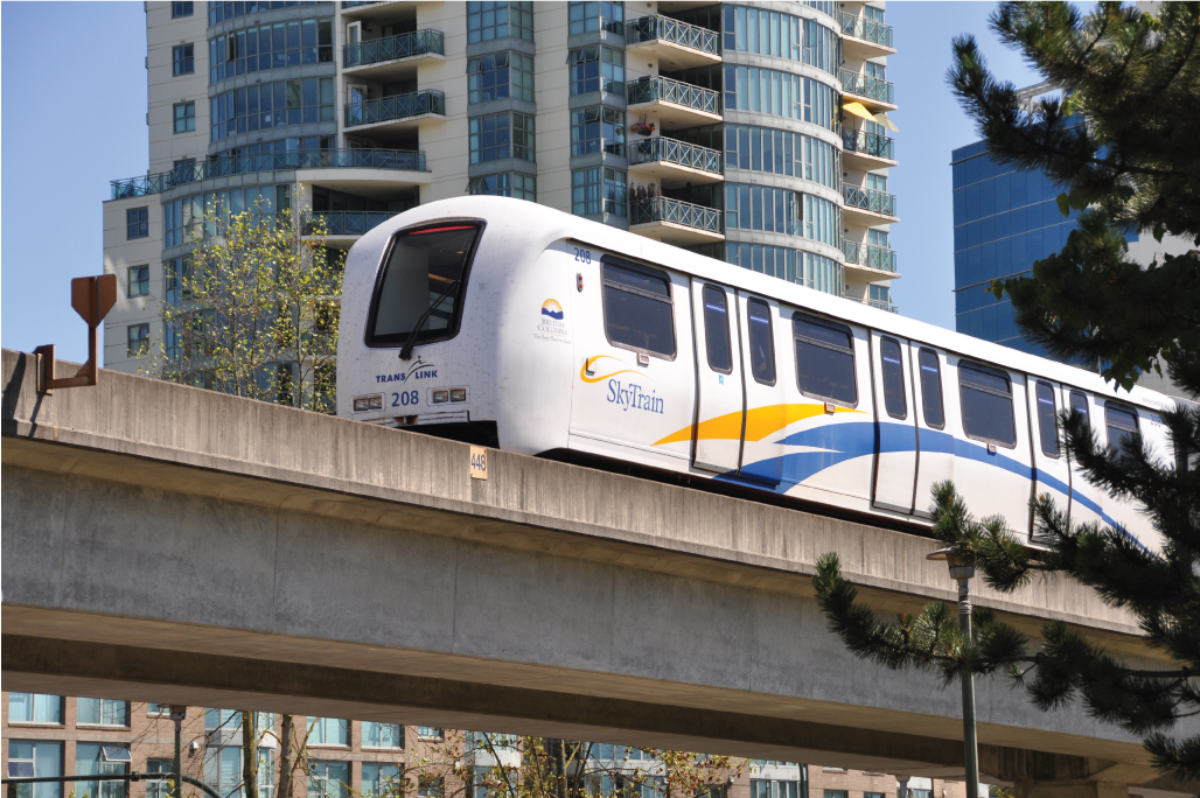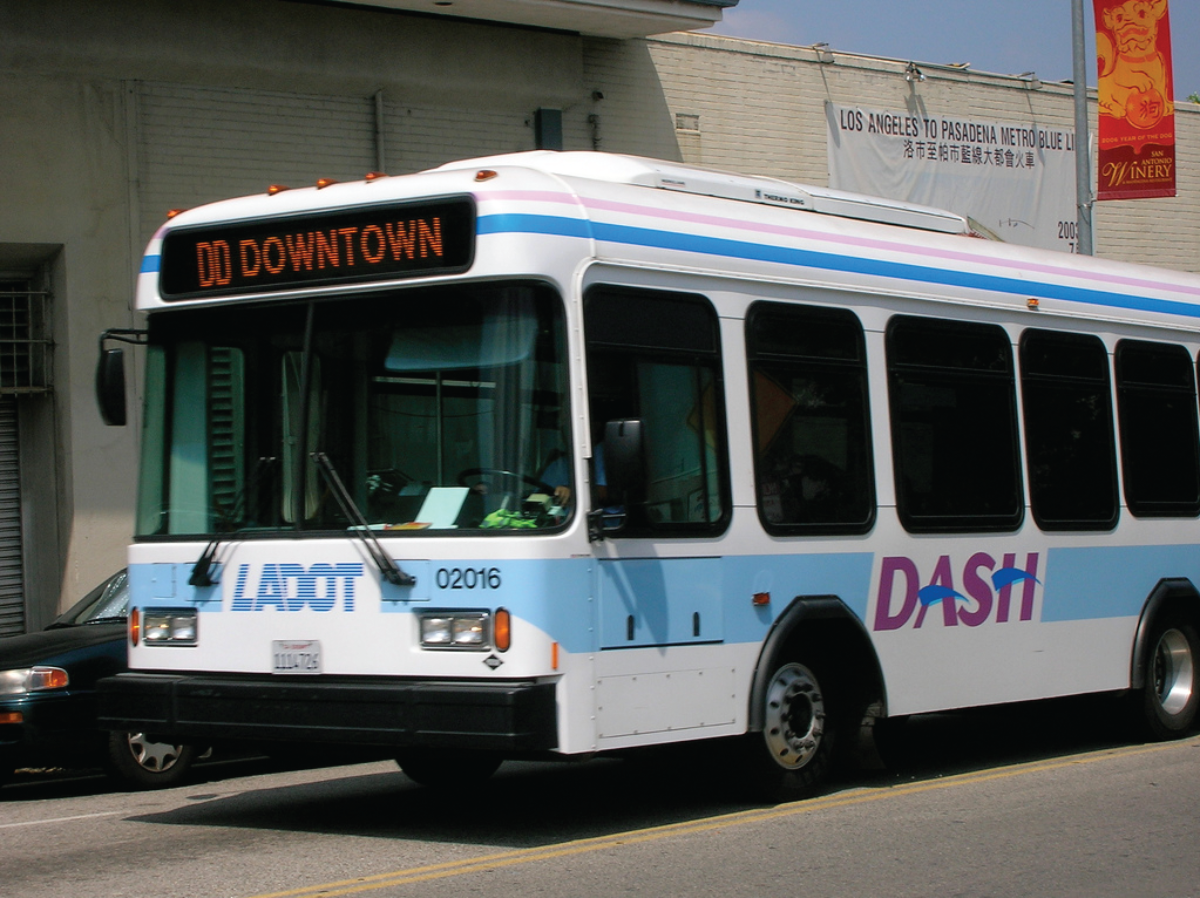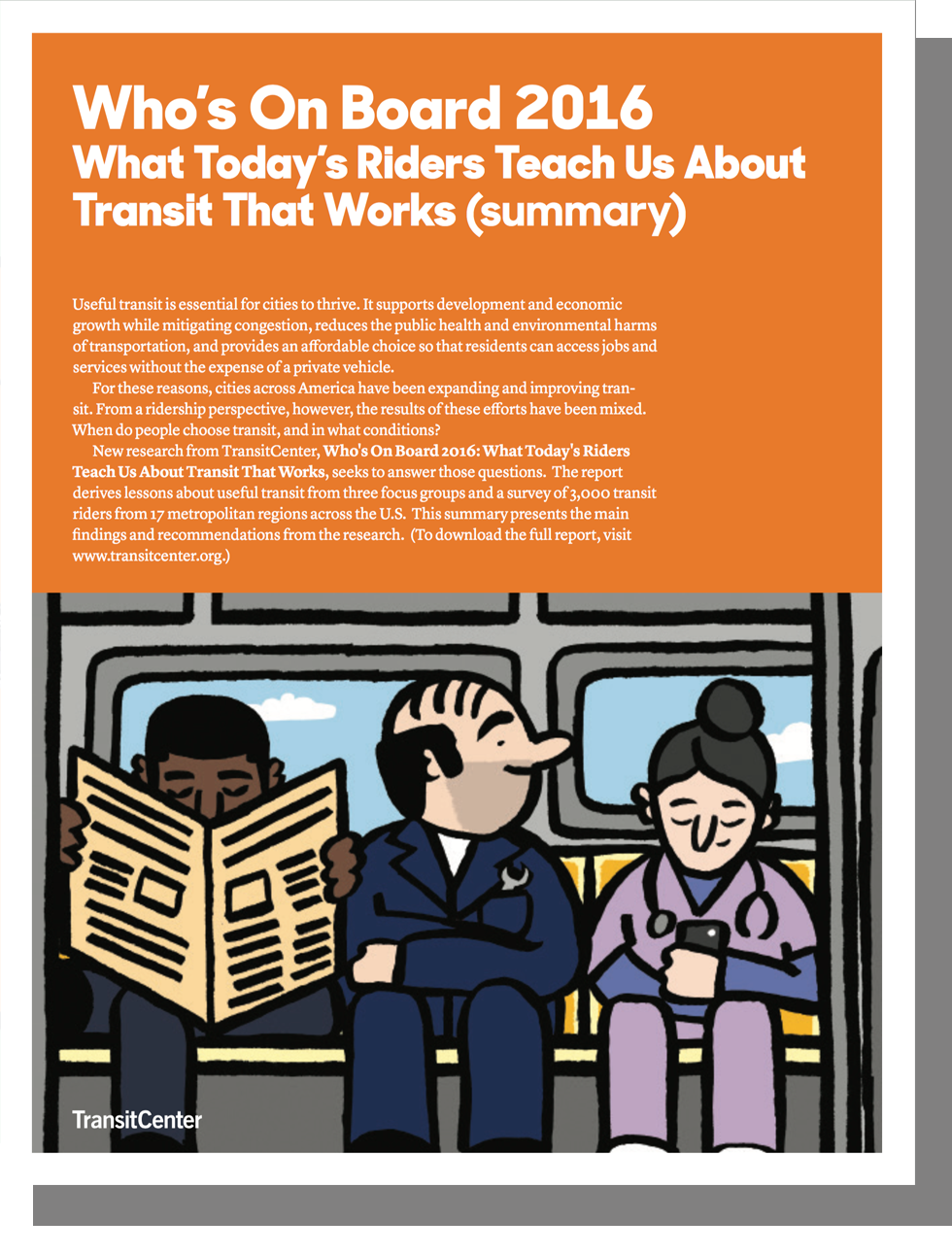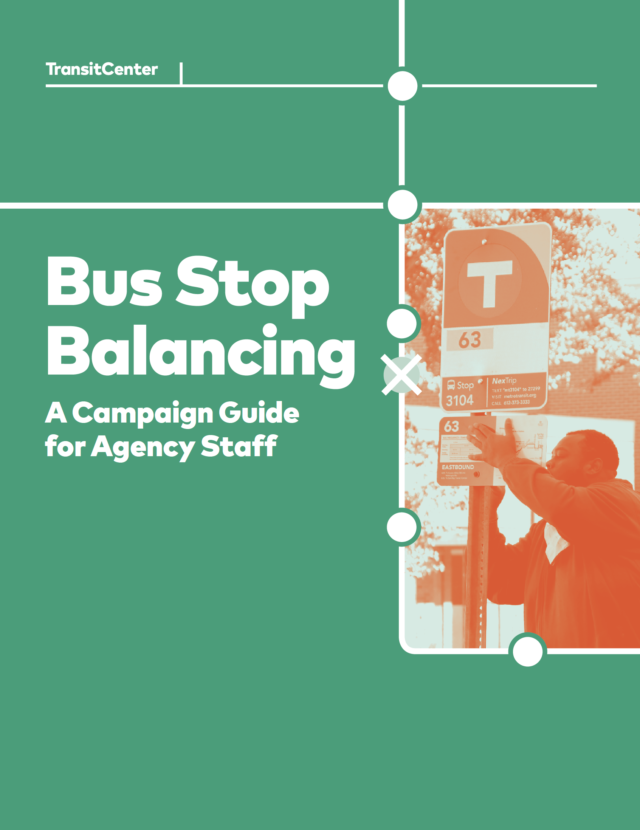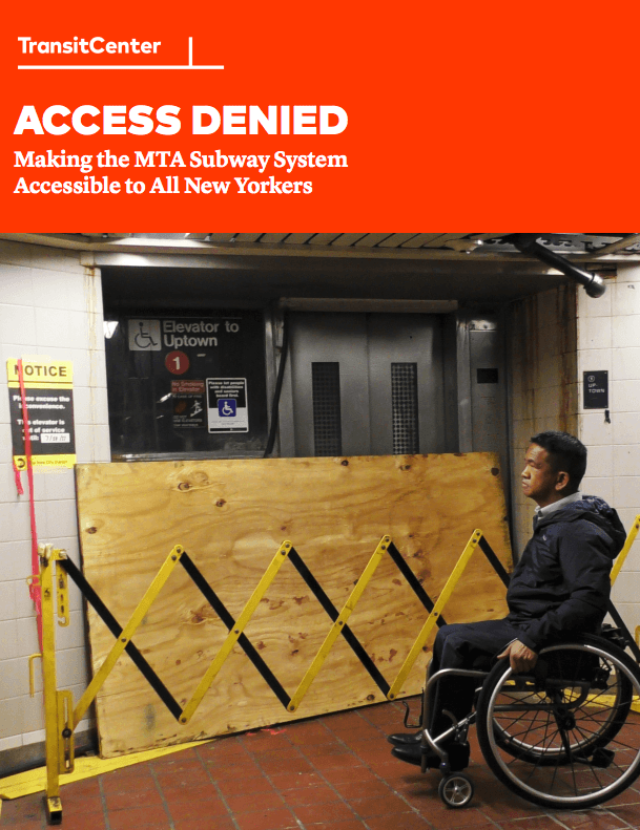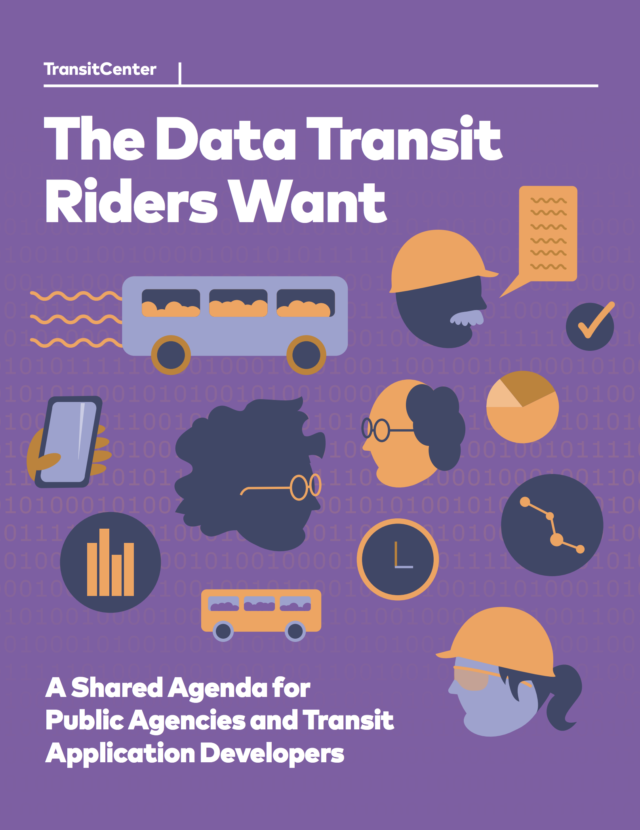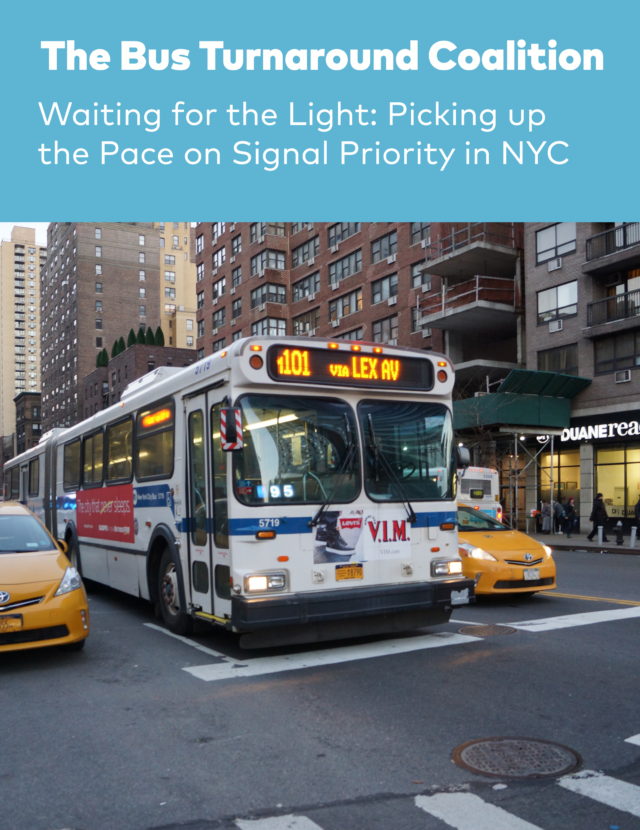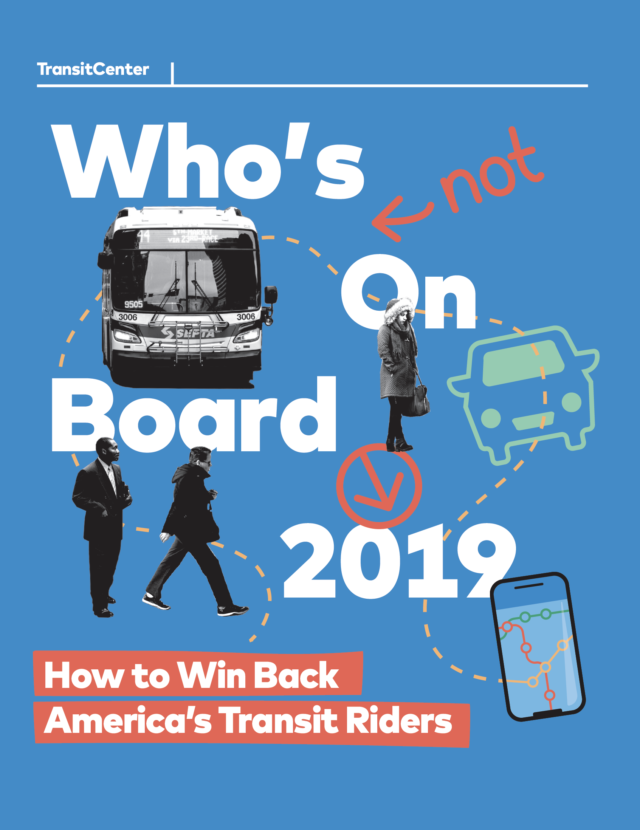Executive Summary
Service contracting is a tool that government can use to improve transit service quality for riders and better position transit agencies to succeed in today’s dynamic transportation industry. Public agencies must strongly align the private sector’s profit motive with the public sector’s goals in order to unlock this potential using financial incentives in contracts and market competition during the bidding process. Public officials and transit agencies who identify this opportunity and use it to advance their long-term goals will have a powerful strategy at their disposal to improve transit for the communities who rely on it.
Contracting does not inherently yield better or worse transit service, and contracting is not “privatization.” A litany of government-managed and government-funded services are delivered by private-sector contractors working for the government, according to contracts that the government has written to hold private companies accountable for delivering those services. Clear accountability and public oversight, effective management, and carefully designed incentives differentiate the most successful contracting regimes from their less successful counterparts.
It is essential that public-sector leaders pursue contracting strategically as a means to further the public interest, without assuming that contracting automatically leads to better service quality or lower cost. Cities and countries where transit contracting is most effective tend to have strong labor protections in place that ensure wages, benefits, and employment are preserved through changes in the contracted operator. Poorly written or otherwise ill-conceived contracts can lock public agencies into bad contracts that erode the status quo and miss opportunities for improvements.
Contracting implementation presents an opportunity not only to improve quality of service, but to rethink the fundamental responsibilities of the transit agency itself.
Contracting implementation presents an opportunity not only to improve quality of service, but to rethink the fundamental responsibilities of the transit agency itself. Agency leaders are hungry for new ways to respond to changing demographics, emerging technologies, and unpredictable political dynamics. Contracting can help strengthen the industry’s footing when used strategically to address these issues and create structural changes.
Contracting is best supported by management structures that are different from the US transit industry’s typical, vertically integrated, government-operated model. Changing the traditional operating model is challenging, but several of this report’s cases show that strong political leadership, good management, and a commitment to improved transit service quality—not a focus on cost-cutting—can lead to progress. In this report, TransitCenter and the Eno Center for Transportation present six case studies—three in Europe (London, Stockholm, and Oslo) and three in North America (New Orleans, Vancouver, and Los Angeles). The research team interviewed more than 70 expert stakeholders from these cities’ transit agencies, city and regional governments, private contractors, researchers, advocates, and labor unions in order to tell these stories.
From these case studies’ common lessons and themes, the report concludes that effective contracting depends on applying three key lessons learned:
The first lesson is that government cannot contract out the public interest. Government is uniquely positioned to prioritize high-quality, affordable, equitable, sustainable, and safe transit access to its citizens. While transit is publicly subsidized around the world to meet these goals, private companies must strive for profitability—a fundamentally different operating model. Labor protections in place at the national level provide foundational ground rules for contracting in all three European case studies. Cases in New Orleans and Los Angeles show that successful contracting requires a clear vision and articulation of the public sector’s goals as well as the agency expertise required to manage large, complex contracts.
Finally, particularly savvy local government leaders can leverage contracting as a strategic opportunity to facilitate more transformational governance change, as agencies in Oslo, Stockholm, and London did. Contracting should be designed to expand, rather than constrain, government’s ability to advance the public interest.
The second lesson is that clear contracts can align contractors’ profit motive with agency goals. Public agencies that contract must clearly articulate their goals and set specific performance standards for private contractors to meet when those contractors seek to profit from public investments. Cases in London, New Orleans, and Los Angeles demonstrate the importance of learning from peer agencies and refining contracts over multiple iterations.London’s use of excess wait time to evaluate bus route reliability and Los Angeles’ use of Vision Zero–related contract incentives are examples of aligning agency goals with strong and measurable performance metrics. Vancouver’s Canada Line contract shows the importance of preserving operational flexibility within the contract itself. Each case study also reflects various context-specific approaches to defining contract-term length, asset ownership structures, and the overall structure of the contracting relationship.
The third lesson is that symbiotic agency-contractor relationships can improve operations and foster innovation. While strong public oversight is a precondition for successful contracting, contractors should also be cultivated as allies in serving the public interest. Agencies in Oslo and Los Angeles show the value of engaging contractors on strategic issues, not just operations, especially because contractors can bring valuable knowledge from the other cities in which they work. The Stockholm case provides an example of an agency setting clear expectations around how the agency will assess financial bonuses and penalties, which is part of fostering a mutually respectful, professional relationship. Stockholm also presents one of the clearest cases of staffing changes intended to complement contractor skills—staffing changes that can enable agencies to focus more on policy and planning to benefit their riders while contractors serve as the agency’s “eyes and ears” in daily operations.
This report presents key operational and strategic insights throughout the six case studies and summarizes those insights in a checklist of concrete actions that city and regional government leaders should take when contracting for private service operations. Contracting out effectively is hard work requiring specialized skills, but transit agencies that internalize and heed this report’s recommendations will gain powerful management strategies—and transit riders will be the key beneficiaries.
Press
Metro Magazine: How and How Not To Contract For Better Transit Service
Planetizen: Lessons in Public-Private Transit Service Contracts
The Advocate: What’s next for the New Orleans RTA?
Lessons Learned
Contracting presents a major strategic opportunity for public officials and transit agency leaders, provided they maintain a laser-like focus on serving the public interest. This requires public-sector leaders to have clear transportation goals. These leaders have a larger strategic opportunity to use contracting to improve governance and/or reform agency management. As the case studies repeatedly demonstrate, contracting can be a powerful means of improving agency management practices in general—by reducing political influence on operational decisions, for example. Agencies are only likely to seize these strategic opportunities if they are prepared to do so proactively, not merely in reaction to regional political dynamics or financial crises.
As the case studies repeatedly demonstrate, contracting can be a powerful means of improving agency management practices in general—by reducing political influence on operational decisions, for example.
Competitive market conditions can maximize contracting’s efficacy. The size and competitiveness within the market for private transit operations have important implications for agencies’ structural approach to contracting. Agencies pursuing contracting need to understand their specific markets in order to attract sufficient competition to make contracting worthwhile.
Government leaders must take steps to ensure that essential labor protections are in place to maintain expertise in the transit workforce and that the transit industry can compete for high quality employees. While those protections are most important for operations staff, agencies also need to ensure that they are staffed at more senior levels with the internal capacity and expertise necessary to oversee complex operations contracts.
Transit agencies can use service contracting to yield major service improvements to benefit riders, and the contract itself is the agency’s means of delivering those improvements. Structurally, contracting enables agencies to focus more efforts on policy and strategies to improve service and rider experience, rather than primarily managing the nuts and bolts of service operations.
Ensuring that those operational nuts and bolts are strengthened by contracting requires clear incentives and requirements embedded in the contract. Effective contracting demands that the public sector take responsibility for aligning service contract incentives with overall transportation goals by way of specific performance metrics tied to financial rewards and penalties.
Contracting for the first time is an imposing and complex undertaking, so agencies seeking to do so will strongly benefit from learning directly from peer agencies who have relevant experiences. US agencies have a number of domestic peers with experience and expertise, but international counterparts will also offer valuable perspectives.
The contract itself will change based on a diverse set of judgments that agencies must make according to their own interests—including how to define the specific roles and responsibilities of contractors relative to the agency itself, how to allocate financial risks, who will procure and own vehicle and infrastructural assets, and how long the contract should be. While agencies may wish to make many of these decisions unilaterally, agencies should also strive to strike a balance in their requests for proposals between being prescriptive and flexible in order to ensure that contractors know what they are bidding on but still have room to propose new or unforeseen solutions.
Public agencies contracting with private companies should be mindful of the heightened importance of transparency needed to ensure public funds are being used appropriately. It is incumbent on agencies to establish accountability mechanisms to track and report on contractor performance, both financially and operationally.
Contractors can strengthen agencies by bringing valuable expertise and perspective to transit operations from their work in other contexts. To best take advantage of contractor expertise—and to more generally ensure positive contracting outcomes—it is important to maintain a positive relationship with contractors. While good contracts are a precondition to improving service through contracting, the contract’s execution is built on personal relationships.
A clear contract is an essential foundation for this relationship, but the contract’s execution should also be consistent and respectful. Agencies should strike a balance with respect to how strictly to enforce penalties, and they should make clear to contractors what this balance will be, thus administering the contract in a way that provides contractors with predictability.
Contractors serve as an extension of the agency’s staff, and as transit operators, contractors will often be better positioned to identify on-the-ground needs and challenges as they arise. Private companies—especially those working in many places— can also provide valuable insight into industry trends and best practices. Agencies should thus build not just an operational but a strategic relationship with contractors. This will ensure that they are able to use these insights to inform agency planning and policy with respect to operations and beyond.
Once contracting is relatively well established, agencies can benefit from adapting their own staffing to complement the skills provided by contractors and avoid staffing redundancies.
Case Studies
London
Through their decades-long experience, London transportation authorities have refined and honed their approach to contracting for transit operations. This practice has improved the quality of the metropolitan area’s service and provides valuable lessons about labor management relations, risk management, and appropriate private and public-sector roles. The London transit network includes many modes, each with its own history and contractual model.
The focus of this case study, however, is the urban bus network, given its long history and relatable lessons for the United States. Starting in 1984, London experimented with various forms of contracting, finally settling on the approach it uses today.
Each phase of London’s contracting experience—from its first politically motivated move to gross-cost contracting, then to its second attempt with revenue sharing via net-cost contracts, and finally to a performance bonus–oriented model in quality-incentive contracting—has valuable lessons. Initial rounds of contracting produced cost savings, but over time, operational costs have risen faster than inflation. At the same time, performance-based targets have greatly improved quality and increased demand, and the region has added more service, all factors that could contribute to increased costs. London’s story exemplifies the positive outcomes of using overarching goals to improve service quality and experience for the customer. It also demonstrates, however, that cost reduction should neither be the exclusive nor the primary goal in implementing a contracted model. Using performance metrics to incentivize service improvements that are important to riders, such as minimizing excess wait time, has helped boost ridership on London’s bus network by 69 percent since 2000.
Using performance metrics to incentivize service improvements that are important to riders, such as minimizing excess wait time, has helped boost ridership on London’s bus network by 69 percent since 2000.
Stockholm
Over a period of two decades, the Stockholm region shifted from government-operated transit, in which a government agency employs government employees to operate government-owned rolling stock (the standard operating model in the US), to a contracting model. Today, Stockholm contracts nearly all aspects of its public transit services, including buses, ferries, subways, commuter trains, and trams. Under this system, the region delegates most route-planning responsibilities to its bus contractors, offering a financial incentive to increase ridership. Stockholm’s gradual transition provides many lessons about both the potential and pitfalls of different approaches and shows how a public agency can evolve from being a day-to-day operator of transit to a setter of standards and overseer of contractors.
Historically, metropolitan transit in Stockholm was directly managed and operated by Storstockholms Lokaltrafik (SL), a public sector agency that also oversaw long-range public transport planning for the Stockholm metropolitan region, home to 2.2 million people.
SL is overseen by the Stockholm County Council, which is responsible for healthcare, transportation, and other public services in the 26 municipalities within the county’s jurisdiction. Similar to London’s rationale for contracting, SL’s desire to rein in administrative and operational costs, paired with an unhappy public (customer satisfaction hovered near 50 percent for local transport services) led the agency to pursue competitive tendering. The Swedish government reformed its transportation policies via the 1988 Transport Policy Act. In addition to introducing vertical separation of the national rail infrastructure from operations (later followed by further steps toward deregulation and market opening), this act granted regional public transportation authorities the ability to contract for operational services. Rather than rushing to implement a new contracting regime immediately for the entire transit system, SL undertook a more incremental implementation process, with the goal of eventually contracting all of its operations.
Oslo
Oslo’s shift to competitive tendering enabled the most significant governance overhaul among the cases presented in this report. While increased competitive tendering in London and Stockholm accompanied gradual evolutions in the roles of TfL and SL respectively, Oslo created an entirely new agency, Ruter. Ruter’s structure as a government-owned company enshrines a rider-focused mentality that guides the agency’s strategy in general—including its approach to contracting.
Two public authorities in the Oslo region managed the regional transit network, one for the municipality of Oslo and another for the surrounding Akershus County. These agencies began rolling out competitive tendering for urban bus and ferry services in 1994, largely in response to nationwide initiatives to decrease subsidies. The transition to competitive contracting did not happen overnight but ultimately led to a big reorganization of the public-sector side of the ledger. As in many European cities, the contracting process began incrementally by restructuring the agency and dividing it into a planning and oversight organization with several operating subsidiaries. When the ferry and bus services were initially tendered, both the publicly owned subsidiaries and private companies bid for the services. While private firms did end up securing many routes, the competitive nature of the bidding process also allowed the publicly owned entities to retain a significant amount of service. Initially the largest opposition to the transition to service contracting in the Oslo region came from the labor unions.
As drivers and mechanics had long been public-sector employees, they were threatened by the change to private operations and were afraid of losing pensions and other benefits. Resistance from labor was not as strong as it has been in other European countries, however—in part because Norway’s strong social safety net helped ease the negotiations—and the unions were able to maintain important work standards and rules from the national government. Nevertheless, labor was not satisfied with the initial contracting system because workers risked losing their jobs during a transition from one contractor to the next.
The workforce won a major victory in 2008, when the national government created a collective agreement that set national wage standards as well as guaranteed jobs during contractor transitions, among other terms. This has resulted in wage increases and has alleviated many of workers’ early concerns about contracting.
Similar to London and Stockholm, the early contracts in Oslo for buses and ferries focused on cost savings. In this case, the region did see cost reductions in the range of 10 to 20 percent relative to the previous system. The first contracts were gross-cost agreements, in which operators were reimbursed for the miles and hours of service they delivered. With little reduction in labor and pension costs, the savings came almost entirely from gains in workforce productivity and vehicle utilization. Prior to the switch to contracting, there were redundancies in transit routes and agency staff roles, particularly in administrative and planning areas. The contracting process allowed the public agency to bring its structure and its operational model into closer alignment.
Prior to the switch to contracting, there were redundancies in transit routes and agency staff roles, particularly in administrative and planning areas. The contracting process allowed the public agency to bring its structure and its operational model into closer alignment.
New Orleans
The New Orleans Regional Transit Authority (RTA)’s contracting method has its roots in the aftermath of Hurricane Katrina, which decimated the region and its transit system, leaving the agency with a need to rebuild infrastructure and staff capacity alike. The RTA’s delegated management approach to contracting meant that, until hiring an executive director in 2017, the agency contracted out management, planning, communications, and operational responsibilities to a single firm starting in 2008. From 2008 to early 2017, the agency undertook this new operational model with only one full-time employee, the secretary of its board. The RTA’s complete lack of in-house staff expertise has limited the agency’s ability to effectively oversee such extensive contracting, particularly during Transdev’s first five-year contract from 2009 to 2014. While the RTA’s transit service has grown substantially since 2008, it did so in spite of a flawed first approach to competitive tendering and contract oversight. The agency’s 2014 contract renegotiation, and its recent hiring of a full-time executive director, reflect an acknowledgment of the first contract’s limitations and a commitment to improve on the region’s contracting model.
The RTA’s delegated management contracting structure and its history are divisive among New Orleans stakeholders. Transit advocates critique the process by which service has been restored and emphasize that funding and bus service remain sparse relative to preKatrina levels, especially relative to the rapid recovery and expansion of streetcar service.
Agency officials and contractors are proud of having gotten transit service in New Orleans running again following Hurricane Katrina’s devastating impact.
The New Orleans case is consistent with the other case studies in this report in demonstrating that contracting for the first time is likely to have some flaws and that iteration through subsequent contracts will help refine an agency’s approach to contracting and achieving long-term success. In 2009, the introduction of the RTA’s delegated management contracting structure brought needed expertise and management capacity to the RTA during a time of crisis. However, the agency’s lack of staff expertise made it heavily reliant on Transdev, limiting the agency’s ability to independently set and pursue a vision for public transportation’s role in the region’s future. The RTA’s experience highlights the need for expert staff who can develop a clear public-sector vision and maintain strong agency oversight to preserve public confidence, transparency, and trust in an agency that contracts out for service operations.
Vancouver
Metro Vancouver’s transit agency, TransLink, engages in limited contracting. Its only major competitive tendering agreement has been with a consortium of private companies to design, build, maintain, and operate the Canada Line, which opened in 2009. This limited contracting regime is not for lack of trying—TransLink leadership worked to create a management structure that would support contracting for bus and even rail services, following the example of Stockholm in creating internal operating subsidiaries to manage its bus and rail operations. The political tides changed before contracting was ultimately implemented on a large scale, however, highlighting the importance of consistent political leadership when pursuing contracting.
While contracting on a larger scale could strengthen TransLink’s operations and improve service quality, the agency already has a reputation for effectively managing its service. Ironically, the agency’s competency could have undermined its own pursuit of contracting— without a major crisis to respond to, there was not the same urgency present in New Orleans, for example (or in Los Angeles, in the next section). Even without full implementation of competitive tendering, merely wielding a “credible threat” of contracting out to private companies helps ensure continued operational efficiency on the part of the public operating subsidiaries. Under the Canada Line contract, however, the agency lacks some operational flexibility, suggesting that agencies considering long contracts in particular should ensure that they preserve their ability to modify service as needed.
Unlike in London, Stockholm, and Oslo, where the move toward competitive tendering was gradual and guided by steadfast, unwavering political direction from the national level, the Metro Vancouver region began the process of creating a contracting regime that never fully materialized. The resulting system looks like a contracted service from the outside, but in reality the transit agency, TransLink, directly manages its own operating subsidiaries. Metro Vancouver’s provincial public transportation authority was created more than 30 years ago. In an attempt to consolidate the several planning and operating agencies in the region, the provincial government of British Columbia created BC Transit in 1983. This agency, headquartered in Vancouver and with an office in the capital, Victoria, managed all public transportation services in the province. BC Transit was a traditional public authority in Vancouver and Victoria, operating and planning transit services with in-house staff. Soon after its creation, BC Transit rolled out the backbone of the Metro Vancouver region’s rapid transit system: the elevated rail system known as SkyTrain. The Expo Line, the first of the system, opened in 1986. As the region’s population grew, BC Transit expanded SkyTrain to connect downtown Vancouver with several suburban areas while continuing to operate the region’s extensive bus network.
Los Angeles County
With nearly 10 million residents, Los Angeles is the most populous county in the United States. Most transit ridership in the county is on directly operated buses and trains, but several agencies have used contracted services for more than three decades, providing 15 percent of transit trips in the region. With more than two dozen operators in the region, Los Angeles County provides a spectrum of lessons regarding organizational dynamics and labor-management relations. This case demonstrates how the City of Los Angeles was able to use contracted and unionized workers to expand its downtown DASH bus network, how the regional Metrolink rail network has refined its contracting process, how the suburban Foothill Transit network has used contracted drivers and management for all of its operations, and how the largest agency in the region (LA Metro) uses contractors to supplement its core network. During the 1970s and 1980s, the provision of public transit in Los Angeles County was dominated by two agencies. The Southern California Rapid Transit District (SCRTD) was the primary operator of the bus network, and the Los Angeles County Transportation Commission (LACTC) was in charge of funding distribution and regional transit planning. The LACTC was also the oversight agency responsible for developing the region’s new rail network. These capital expansion initiatives created substantial tension between the two agencies.
Problems began in the 1980s when the LACTC began constructing new rail lines, which the SCRTD feared would divert passengers from its bus network. Despite both agencies recognizing that their fighting was causing delays, wasting money, and duplicating efforts, the discord continued. As the tensions escalated in the early 1990s, the state legislature combined the agencies into a single entity to serve the entire county. The agencies officially merged on April 1, 1993, to form the Los Angeles County Metropolitan Transportation Authority, also known as Metro. During this period of governance change, the SCRTD was under public pressure to rein in costs and reverse declining ridership, particularly on the bus network. It spun off several local bus lines to municipal governments, and some cities created new joint powers authorities to operate parts of the system that the regional agency cut from service. LA Metro is still by far the largest operator of rail and bus service in the region, however, and acts as the primary transit planner and funding allocator for the local municipal operators. Contracting for service in the region varies by agency, each with its own unique history and lessons.









